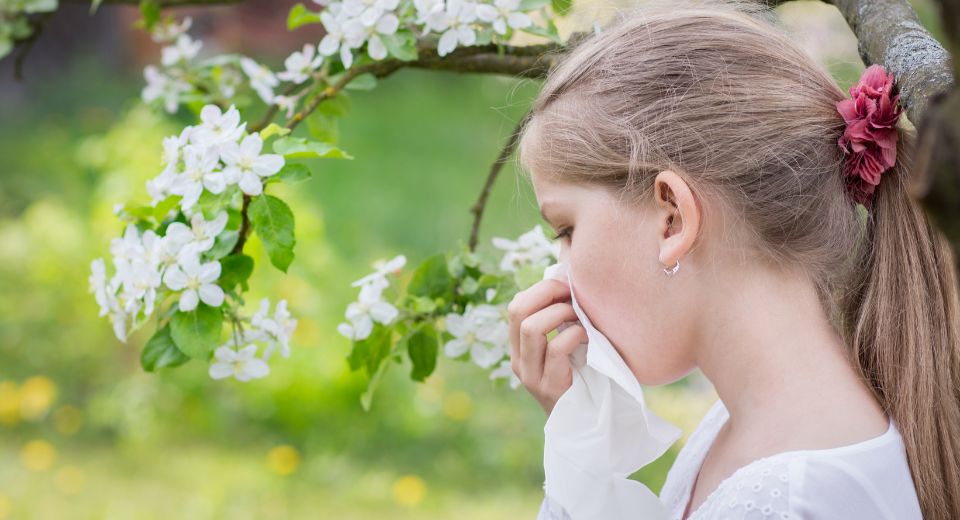
Author: Colleen Kraft, MD, Pediatrician
Allergies often start in childhood and continue throughout life. Allergies are caused by the body’s reaction to substances called “allergens,” which trigger the immune system to react to harmless substances as though they were attacking the body. Although allergies can’t be cured, with proper care they can usually be kept under control.
When to Suspect an Allergy
Some allergies are easy to identify by the pattern of symptoms that follows exposure to a particular substance. But others are subtler, and may masquerade as other conditions. Here are some common clues that could lead you to suspect your child may have an allergy.
Repeated or chronic cold-like symptoms that last more than a week or two, or that develop at about the same time every year. These could include:
- Runny nose
- Nasal stuffiness
- Sneezing
- Throat clearing
- Nose rubbing
- Sniffling
- Snorting
- Sneezing
- Itchy, runny eyes
Common Allergens in Home and School
In the fall, many indoor allergens cause problems for children because they are inside of home and school for longer periods.
- Dust: contains dust mites and finely ground particles from other allergens, such as pollen, mold, and animal dander
- Fungi: including molds too small to be seen with the naked eye
- Furry animals: cats, dogs, guinea pigs, gerbils, rabbits, and other pets
- Clothing and toys: made, trimmed, or stuffed with animal hair
- Latex: household and school articles, such as rubber gloves, toys, balloons; elastic in socks, underwear, and other clothing; airborne particles
- Bacterial enzymes: used to manufacture enzyme bleaches and cleaning products
- Certain foods
Controlling Allergy Symptoms
- It’s helpful to use air conditioners, where possible, to reduce exposure to pollen in both your home and your car.
- Molds are present in the spring and late summer, particularly around areas of decaying vegetation. Children with mold allergies should avoid playing in piles of dead leaves in the fall.
- Dust mites congregate in places where food for them (e.g , flakes of human skin) is plentiful. That means they are most commonly found in upholstered furniture, bedding, and rugs.
- Padded furnishings, such as mattresses, box springs, pillows, and cushions should be encased in allergen-proof, zip-up covers, which are available through catalogs and specialized retailers.
- Wash linens weekly, and other bedding such as blankets, every 2 to 3 weeks in hot water to kill the dust mite.
- Pillows should be replaced every 2 to 3 years.
Although there are many over-the-counter antihistamines, decongestants, and nasal sprays, it is very important that you work with your child’s doctor over the years to make sure that your child’s allergy and asthma are correctly diagnosed and the symptoms properly treated.
The information provided is for general interest only and should not be misconstrued as a diagnosis, prognosis, or treatment recommendation. This information does not in any way constitute the practice of medicine, or any other health care profession. Readers are directed to consult their health care provider regarding their specific health situation. Marque Medical is not liable for any action taken by a reader based upon this information.

